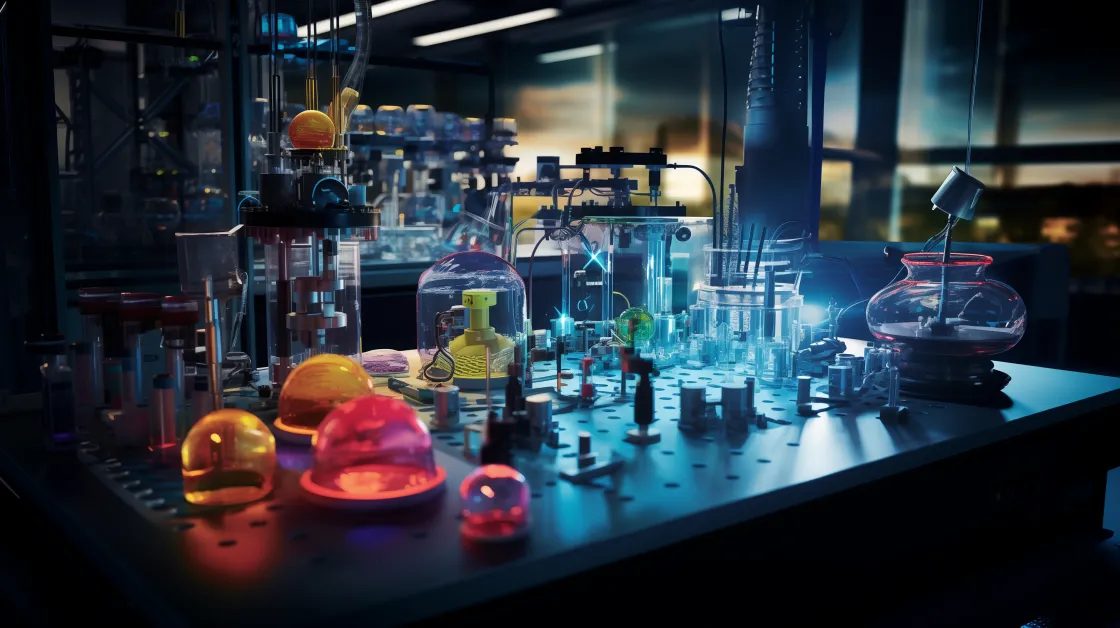Table of Contents
Scientists used a robot chemist powered by ChatGPT to plan and perform tricky chemical reactions in a lab run by robots. This system, known as Coscientist, can create various compounds, like paracetamol and aspirin, by planning, coding, and executing reactions. It does all this using its robot equipment in the lab. This exciting method was shared in a Nature article on December 20. The robot chemist, with its smart abilities, becomes like a clever assistant to chemists, helping create important medicines and compounds in the lab with precision and efficiency.
Robot Chemist Redefines Chemical Experimentation
Chemist Gabe Gomes, from Carnegie Mellon University in Pittsburgh, was stunned when a robot chemist independently planned, designed, and carried out a human-made chemical reaction. He called it amazing and a “wow” moment. This non-organic intelligence amazed Gomes, who led the research. He was surprised to see the robot chemist performing tasks invented by humans without any help.
Rapid advancements in artificial intelligence (AI) have led to its widespread use in various scientific fields. However, for scientists working hands-on in labs or those unfamiliar with coding, using AI can be challenging. This was the perception until Gomes came into play. Gomes believed that AI, specifically the kind integrated into a “robot chemist,” could make these powerful tools more user-friendly for researchers who might not be tech-savvy or spend most of their time in the laboratory. With a robot chemist, Gomes aimed to bridge the gap and provide accessible AI solutions for those directly involved in experimental work.
In March, Gomes and his team embarked on adapting the recently released GPT-4, the latest iteration of the large language model (LLM) powering ChatGPT, to cater to the needs of chemists.
Coscientist1, our robot chemist, uses super-smart computers like GPT-4. When a person asks, it looks at lots of chemistry info to plan how to make a molecule. It checks online guides to pick the right tools and stuff it needs. Then, it decides the best way to mix them to make the molecule in real life. This robot chemist knows what kit and materials work best from the internet instructions and chooses how to make the molecule happen.
The AI also utilizes the LLM Claude, which was developed by Anthropic, an AI company based in San Francisco, California. Additionally, it employs Falcon-40B-Instruct, another AI system created by the Technology Innovation Institute in Abu Dhabi.

Create, Program, and Integrate
The robot chemist team asked the system to figure out how to make different things like paracetamol, aspirin, nitroaniline, and phenolphthalein. In the beginning, Coscientist planned out the best way to make these things so they would turn out well. Then, it did the steps to make these things, and it did them right. It made these molecules exactly how they should be made, and it did a good job of planning it all out beforehand.
Lee Cronin, a chemist at the University of Glasgow, UK, highlights the significant value of utilizing LLMs to delve into the realm of literature and generate innovative concepts for practical chemical reactions.
The scientists gave the robot chemist, Coscientist, a harder task. They wanted it to do something called Suzuki-Miyaura coupling, which joins carbon atoms together, crucial in creating medicines. Surprisingly, the robot chemist succeeded in this task as well.
Many teams make ‘chemistry robots’ using LLM tech. One of these robots, ChemCrow, works like a Coscientist. It creates different molecules, like DEET2, used in insecticides. ChemCrow was made around the same time as Coscientist. Andrew White, a chemist at the University of Rochester in New York, led the team creating ChemCrow. But when Nature asked for comments, White chose not to respond. These robot chemists, using advanced tech, help in making various molecules, and ChemCrow is a notable example, even though its creator didn’t comment when asked by Nature.
Tiago Rodrigues, a pharmaceutical chemist at the University of Lisbon, foresees widespread use of tools like Coscientist. According to him, future automation tools might integrate AI assistants, envisioning self-driving labs. He believes AI tools are crucial for complete automation, optimizing the design-make-test cycle. While these systems handle routine tasks, Rodrigues notes limitations in exploring complex research questions in drug discovery. He emphasizes that expertise in both chemistry and biology is necessary. Despite advancements, achieving comprehensive understanding, especially in drug discovery, remains a challenge for these automated systems, highlighting the broader scope beyond routine tasks for the evolving concept of a “robot chemist.”
Gomes reflects on the capabilities of coscientists, stating that they can perform tasks similar to highly skilled chemists. He emphasizes the need for caution in the use of technologies like Coscientist and ChemCrow, as certain applications may pose risks.





